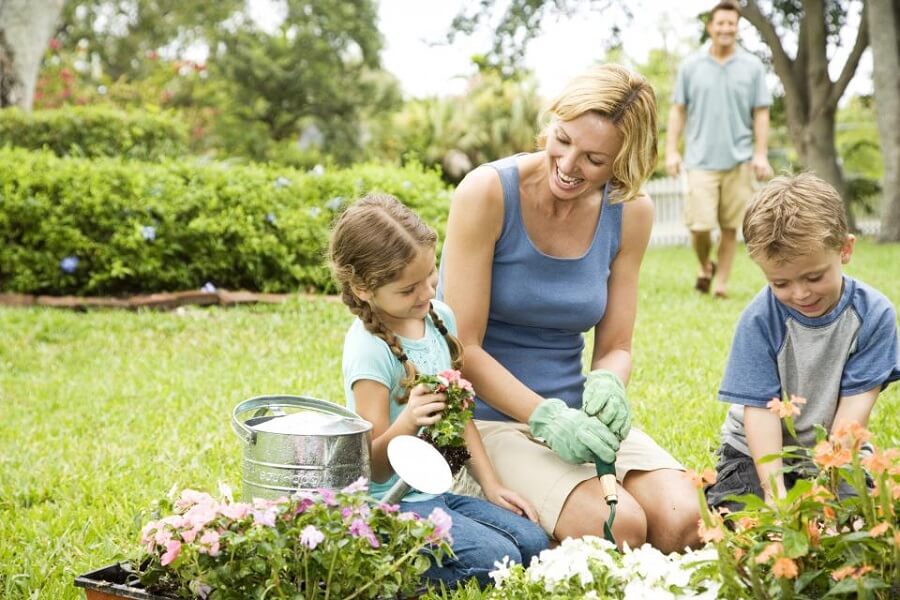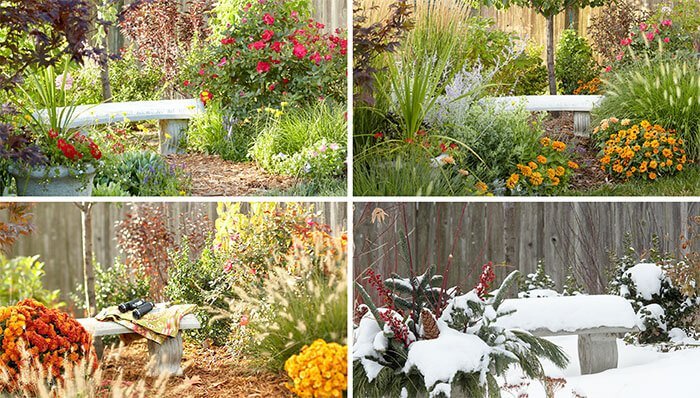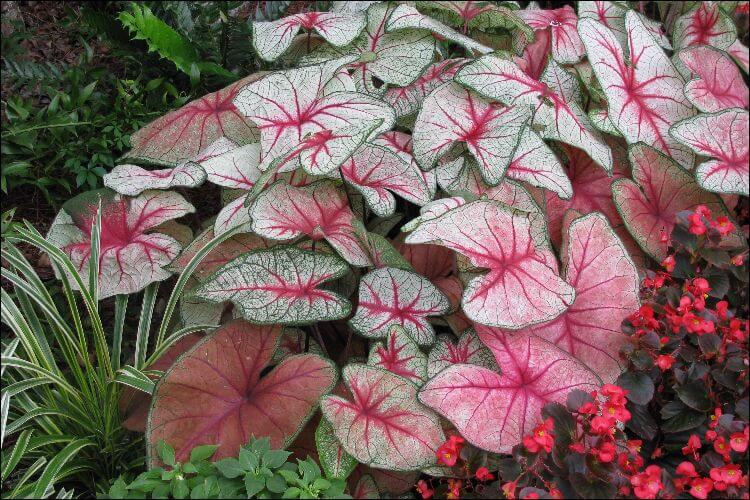If you’re passionate about gardening and you want to teach your kids why this is such an amazing activity, you have to find a way to provide them with some structure and keep things interesting. Depending on the age of your kid, he or she might get bored fast while hearing about gardening. Especially if there’s no practice involved, which is why we came up with 4 gardening lesson plans that you can use. They combine both theory and practice, and your children are bound to love them. Let’s see how you can teach your kids about the garden in a fun and interesting way!
4 Gardening Lesson Plans for Children
1. The Importance of Watering
One of the first things that you should teach your child when it comes to gardening is how important it is to water the plants. In order to do that, you’re going to have to first explain that plants are just like us humans when it comes to consuming water. They too need water in order to survive, and it’s our duty to provide them with it.
The materials you’re going to need for this lesson plan are soil, water, two watering cans, two buckets, and a rain gauge. You don’t need a lot for this gardening lesson. Take your child to a place where you can do this activity without making a mess (preferably outside). Ask him or her to fill their bucket with soil while you fill yours. Then, ask them to touch the soil and describe the feeling. Explain that this is how dry soil feels. You can mention that this is generally something they want to avoid when growing plants.
Then start adding water to the soil by using your watering cans. Ask your child to stop when you think the soil has received the appropriate amount of water and test the soil again. Teach your child that the soil should be moist but not extremely damp. Make sure they know it should not be waterlogged. In order to demonstrate what that would look like, pour some more water over the soil until it becomes saturated.
The purpose of the rain gauge is to explain to your children why they should use such a device in order to measure the amount of rain that falls over a certain period of time. The aim of this first out of 5 gardening lesson plans is to help your children understand the importance of providing plants with just the right amount of water. Another useful thing that you could include in this lesson plan is what would happen if you were to overwater the plants.
2. What’s Safe to Eat and What You Should Stay Away From
This is perhaps one of the most entertaining gardening lesson plans that you could use with your children. That’s because it involves a lot of practical activities. It also involves a show-and-tell activity that’s designed just like a game. Now, what you’re going to need for this lesson plan are photos of edible plants, photos of non-edible plants, a poster board where you’re going to write some questions and answers, and a couple of plastic bags.
The purpose of this lesson plan is to help children learn the difference between plants that are safe for them to eat and plants that will harm them if they do. They’re going to do that by also looking at some of the properties of a garden. It’s important to see how the environment influences the plants you grow in a garden.
We advise you to take a moment and prepare some questions for your children before you actually start this activity. Write the questions on the poster board. Just make sure you leave enough room for the answers they’re going to provide you with. You could ask them the reasons behind planting an edible garden. Or you can ask who should care for it, how they should do that, and so on.
Then, you’re going to start the lesson with the game. Show your children the pictures of edible and non-edible plants that you’ve gathered. Next, ask them to say whether they think they can eat them or not. It would also be useful to do some research on the non-edible plants. Explain to your children exactly why they shouldn’t eat them.
The next step of this lesson plan involves actually going to the garden (if you have one). There, you can assist your children as they select two plants that are edible and two that are not. However, if you don’t actually have a garden, you can always buy some plants from both categories to identify.
After doing all of these things, it’s time to take a look at the questions that you’ve already written on the poster board. They should be a bit easier for your children to answer now that you’re almost done with the lesson plan. If they can’t come up with any answers, feel free to help them out and provide them with some clues.
3. Beneficial and Damaging Garden Visitors
Apart from gardening lesson plans that teach children about plants and how to take care of them, you should also consider some gardening lesson plans that provide an outlook on the creatures that usually populate or visit a garden. These creatures can be both beneficial and damaging. That’s why it’s important for your children to know which is which. That way, they can act accordingly when the time comes. For this lesson plan, you’re going to need the following materials: pictures of garden creatures, a couple of their most important characteristics, a few interesting facts about them, some colored pencils, and some sheets of paper.
The first thing you’re going to want to do is to show your children the pictures you’ve collected. Ask them if they know what these garden creatures are called. If they don’t, you’re going to have to provide them with the answer. Beyond recognizing the creatures, ask them to also place them in different categories, such as insects, spiders, worms, and so on.
Ask them to think whether or not they’ve ever seen the respective creatures in the garden. If so, can they think of any particular characteristic that they found interesting? Can they describe what the creatures were doing at that time? Complete the information they provide you with by adding the facts that you found while researching the creatures.
An optional step (that depends on whether or not you have a garden) is to go outside and try to identify at least a couple of the garden visitors that you’ve talked about. This would be great practice for your children because they’re more likely to remember something they see in real life rather than a drawing or picture.
Finally, if you think this is an activity your children would enjoy, encourage them to use the colored pencils and the pictures you’ve shown them to create a journal page. They can talk about their favorite garden visitor and what they like about it. First, they can mention whatever they remember about it from the previous discussion. Then, they can paste the picture of that specific creature, and they can even draw the creature as best as they can.
4. How Weather and Seasons Affect Gardening
We end today’s list of gardening lesson plans for children with learning about the weather and how it affects gardening. This lesson plan will teach children when they should plant things in their gardens and how the weather affects it. Moreover, children are going to learn that different seasons are fit for different gardening activities and growing different plants. Plus, they’ll find out how the weather, and climate in general, affect the quality and quantity of the plants.
For this lesson plan, you’re going to need a calendar, a seasonal month chart, some pictures of a garden during all four seasons, some season labels, a glue stick, and some colored pencils and/or markers. The first thing you should do is ask your children to identify the seasons in the pictures you’ve provided them with. The seasonal month chart is supposed to help them get through this process faster. Give them the empty calendar and ask them to paste the seasonal pictures and the labels on their respective months.
Now it’s time for your children to be a little more creative. They can use the colored pencils to draw what they think happens in the garden during each season. You can add their drawings to the calendar as well.
Finally, start a discussion about the importance of weather and seasons in gardening. You could touch on how the seasons connect to the plants you grow and the animals that populate your garden. Also mention how the seasons change the look of the garden, and what people have to do in the garden.
We hope these 4 gardening lesson plans are going to help you teach your children about the main aspects of gardening. They should instill a love of gardening that’s going to convince them to grow their own plants when they’re older.













